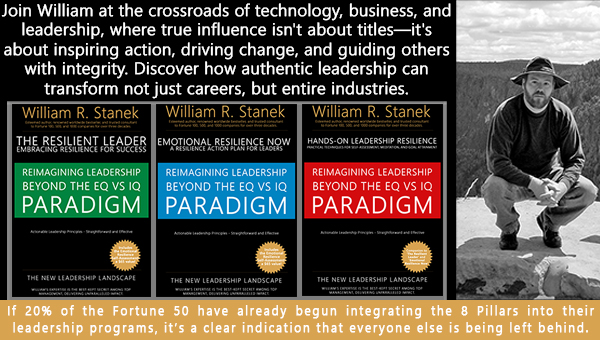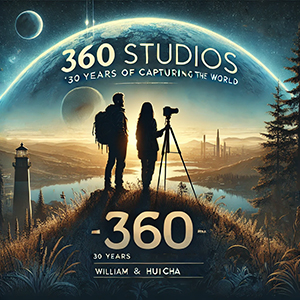
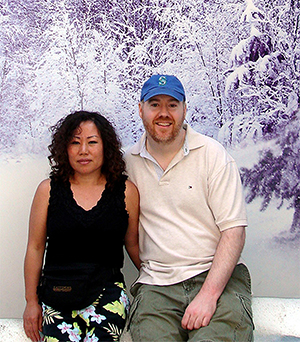 Photography Tips for Everyday Moments
Photography Tips for Everyday Moments
The most extraordinary beauty is often found in ordinary moments. In this series, William Stanek helps you see the world through a new lens, transforming everyday experiences into stunning photographic memories.
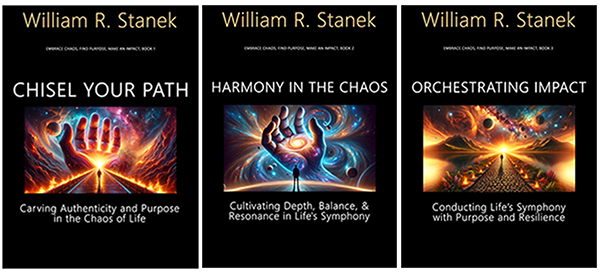
Transform your life with practical wisdom. Discover William Stanek's 'Living Well' series—your guide to a balanced and fulfilling life.
Discover William Stanek's Exclusive Art Collection
Explore and purchase the stunning art featured on this site. Own a piece of William Stanek's unique and captivating artwork today!
(April 26, 2025) Finding Art in the Mundane: Elevating Everyday Moments
Photography is often associated with grand landscapes, exotic locations, and meticulously planned shots. But the true essence of photography lies not in the extraordinary, but in the ability to find beauty in the ordinary. Here, we'll delve into the art of seeing, showing you how to transform the mundane into something magical. Whether you’re just starting out or have years of experience, this guide will help you refine your ability to capture the everyday moments that most people overlook.
Introduction: Discovering the Extraordinary in the Ordinary
Let’s start with a personal story—a moment that taught me to see the world differently. I grew up in Racine, Wisconsin, a place where life was often more about survival than beauty. My childhood was marked by hardship, from the early loss of my stepfather and sister to the struggles of making ends meet. But it was also in this environment that I first discovered the transformative power of photography.
One day, as I walked through my neighborhood, I noticed an old, rusted bicycle leaning against a fence. The bike was nothing special, just an object most would pass by without a second glance. But the way the afternoon light hit the metal, the shadows it cast on the cracked pavement—it was as if the scene had been waiting for someone to see it. I took out my camera, framed the shot, and captured that fleeting moment. When I looked at the image later, I realized I had photographed more than just a bike; I had captured a story, a feeling—a piece of art.
This experience taught me an invaluable lesson: Beauty isn’t reserved for the grand or the spectacular. It’s all around us, in the small, everyday moments that make up our lives. You just have to be willing to see it.
The Philosophy of Seeing: Training Your Eye to Find Beauty
Photography, at its core, is about seeing. It’s about looking beyond the surface and finding meaning in the mundane. But developing this kind of vision requires more than just technical skill; it requires a mindset shift—a way of approaching the world with curiosity, openness, and a sense of wonder.
Mindful Observation: Before you even pick up your camera, take the time to observe your surroundings. Pay attention to the details—the textures, the colors, the interplay of light and shadow. Ask yourself: What story does this scene tell? How does it make you feel? What is the essence of this moment?
Pro Tip: Carry a notebook with you. Jot down your observations, thoughts, and feelings as you explore. This practice not only sharpens your observational skills but also helps you connect more deeply with your subject matter. Photography is not just about what you see, but about how you see.
Exercise: Spend a day in your neighborhood with your camera. Walk slowly, and look closely at everything you normally overlook. Photograph anything that catches your eye—a patch of peeling paint, the way the light filters through a tree, the expression on a passerby’s face. Later, review your photos and note what drew you to each scene. This exercise will help you start seeing the beauty in the everyday.
Perspective and Composition: The Art of Framing the Mundane
One of the most powerful tools in a photographer’s arsenal is perspective. The angle from which you shoot can completely transform an image, turning the ordinary into something extraordinary. The way you compose a shot determines not just what the viewer sees, but how they see it.
Experimenting with Angles: To elevate an everyday scene, start by experimenting with different angles. Get low to the ground to create a sense of scale or shoot from above to emphasize patterns and shapes. A slight change in perspective can turn a mundane object—like a pair of shoes by the door—into a compelling composition.
Rule of Thirds: The rule of thirds is a classic composition technique that can help you create more dynamic images. Imagine your frame divided into nine equal parts by two horizontal and two vertical lines. Positioning the key elements of your scene along these lines, or at their intersections, can make your photos more balanced and interesting.
Breaking the Rules: While the rule of thirds is a great starting point, don’t be afraid to break it. Sometimes, centering your subject or placing it in an unconventional part of the frame can create a stronger impact. Photography is an art, not a science, so trust your instincts and experiment with what feels right.
Pro Tip: Use leading lines—such as a sidewalk, a row of trees, or a shadow—to draw the viewer’s eye into the image and towards your subject. This technique can add depth and guide the viewer’s journey through the photo.
Exercise: Choose a simple object or scene, such as a chair in your living room or a window with curtains. Photograph it from multiple angles, using the rule of thirds, leading lines, and other composition techniques. Compare the results and consider how each perspective changes the way the subject is perceived.
Lighting: Harnessing the Magic of Natural Light
Light is the most fundamental element of photography. It shapes your image, sets the mood, and highlights the subject. Learning to work with natural light—rather than relying on artificial sources—can help you bring out the beauty in everyday scenes.
Golden Hour: The hour just after sunrise and just before sunset is known as the golden hour. During this time, the light is soft, warm, and diffused, casting long shadows and giving your photos a magical glow. It’s the perfect time to capture everyday scenes in a way that feels both timeless and ethereal.
Natural Light Indoors: Indoors, natural light can be just as powerful. Look for windows or open doors that allow light to pour into a room. Use curtains to diffuse harsh sunlight and create a softer, more even light source. Observe how the light changes throughout the day and how it interacts with different objects and surfaces.
Pro Tip: Backlighting—where the light source is behind your subject—can create a dramatic silhouette or halo effect. This technique is particularly effective in creating a sense of depth and adding a touch of mystery to your images.
Exercise: Choose a spot in your home where natural light filters in—perhaps a kitchen window or a balcony door. Spend a day photographing this space at different times, capturing how the light changes and how it affects the mood of the scene. Notice the difference between harsh midday light and the soft glow of the golden hour.
Embracing Imperfection: The Beauty of Candid Moments
In a world obsessed with perfection, there’s something refreshing about the raw, unfiltered truth of candid photography. Capturing moments as they unfold—without posing or staging—can result in images that are more authentic and emotionally resonant.
The Power of Imperfection: Some of the most compelling photographs are those that embrace imperfection. A slightly blurred motion, a crooked horizon, or an unexpected shadow can add character and depth to an image. These imperfections often tell a story that a perfectly composed shot might miss.
Candid vs. Posed: Candid photography captures the essence of a moment—the genuine expressions, the spontaneous interactions, the unguarded emotions. While posed portraits have their place, candid shots often reveal the true nature of a subject in a way that’s more relatable and engaging.
Pro Tip: To capture candid moments, keep your camera ready and observe your surroundings carefully. Anticipate the moment before it happens, and shoot quickly and discreetly. The less intrusive you are, the more natural your images will be.
Exercise: Spend an afternoon photographing people in a public space—like a park, a café, or a market. Focus on capturing candid moments, such as a child playing, an elderly couple chatting, or a vendor arranging their goods. Try not to intervene or direct your subjects; instead, let the moments unfold naturally.
Capturing Stories: Finding the Narrative in Everyday Life
Every photograph tells a story, whether it’s a sweeping landscape or a simple still life. In everyday photography, your goal is to find and capture the stories that exist in the ordinary moments of life. These stories might be subtle—a glance, a gesture, a moment of stillness—but they are no less powerful.
The Art of Storytelling: To create a narrative with your photography, think about what you want your image to convey. What is the subject feeling? What is the context of the scene? How does this moment fit into the larger story of the day, the place, or the person? Even a single image can suggest a beginning, a middle, and an end.
Creating a Series: Sometimes, a single photo isn’t enough to tell the whole story. Consider creating a series of images that, when viewed together, offer a more complete narrative. This approach can be particularly effective in capturing the rhythm of daily life, with each image contributing to the overall story.
Pro Tip: Look for contrasts and juxtapositions in your scenes—light and shadow, movement and stillness, joy and melancholy. These contrasts can add complexity to your narrative and make your images more engaging.
Exercise: Choose a theme—such as “morning routine” or “quiet moments”—and create a series of five to ten images that explore this theme. Pay attention to how each image contributes to the overall story. Once you’re done, arrange the photos in a sequence that best tells the story you want to convey.
Seeing the World Differently: Developing an Artistic Mindset
Photography is as much about mindset as it is about technique. To find beauty in the mundane, you need to approach the world with an artistic mindset—one that values curiosity, creativity, and a willingness to see things differently.
Cultivating Curiosity: Curiosity is the driving force behind every great photograph. It’s what makes you stop and look closer, what compels you to explore new angles and perspectives. Cultivate your curiosity by asking questions about the world around you: What’s the story behind that old building? How does the light change as the day progresses? What emotions does this scene evoke?
Embracing Creativity: Creativity is about breaking the rules, experimenting with new ideas, and taking risks. Don’t be afraid to try unconventional techniques or to push the boundaries of traditional photography. The more you experiment, the more you’ll develop your unique artistic voice.
Pro Tip: Keep a photography journal where you document your ideas, experiments, and reflections. This journal can serve as a creative outlet, a source of inspiration, and a record of your artistic journey.
Exercise: Set aside time each week to go on a “photo walk” with no specific goal in mind. Simply explore your surroundings with your camera, allowing your curiosity and creativity to guide you. After each walk, review your photos and write down your thoughts and observations in your photography journal.
Conclusion: The Art of Everyday Life
Finding art in the mundane is not just a photographic skill—it’s a way of life. It’s about seeing the world with fresh eyes, appreciating the beauty in the small moments, and capturing those moments in a way that tells a story. Whether you’re photographing a bustling city street or the quiet corners of your home, the potential for creating art is always there. You just have to be willing to see it.
As you continue your photography journey, remember that every moment holds the potential for beauty. The more you practice seeing the world through an artistic lens, the more you’ll discover that the ordinary is often extraordinary. So grab your camera, step outside, and start capturing the stories that are all around you.
Share your everyday moments with us on Instagram using #ArtOfLivingWellPhotography. Let’s celebrate the beauty of the mundane together and inspire each other to see the world in a new light.
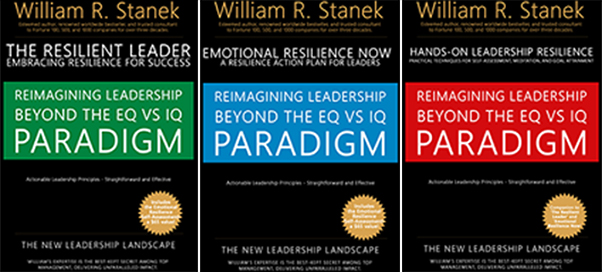
Join William at the crossroads of technology, business, and leadership, where true influence isn't about titles - it's about inspiring action, driving change, and guiding others with integrity. Discover how authentic leadership can transform not just careers, but entire industries.
Bring Inspiration Home
Enhance your space with William Stanek's evocative art. Each piece is crafted to inspire and uplift your everyday life.
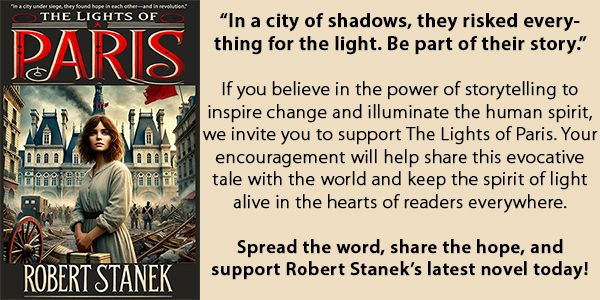
Support The Lights of Paris by Robert Stanek, William Stanek's pen name! Through vivid historical detail and deeply moving character stories, Robert takes readers on an unforgettable journey through one of history’s most transformative times.
